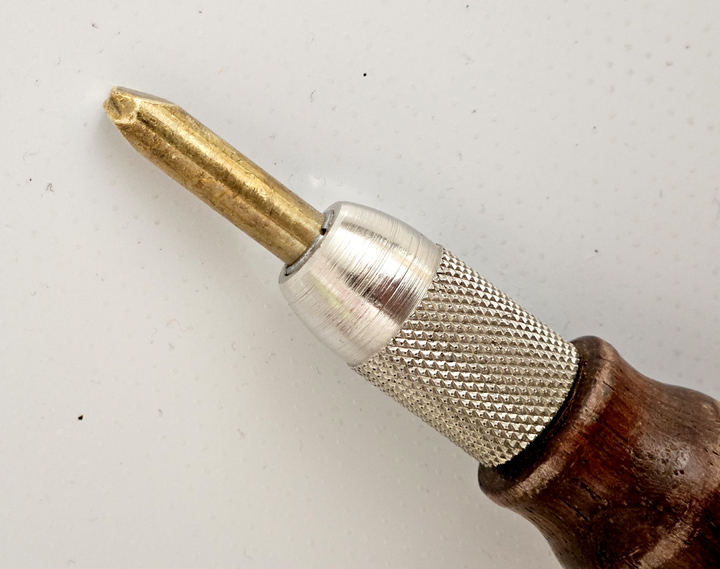In addition to all that has been mentioned, you should mute the new string. Tape a wedge to the plate to mute the highest bass string. Better for the note to be soft and in tune than loud and out of tune.
Original Message:
Sent: 10/13/2023 6:47:00 PM
From: Geoff Sykes
Subject: RE: Bass string stabilization
I had to wait until Alan provided the term for the tool I could not think of before posting. Brass Drift. Here's a pic of what that is. Or at least the one that I made.

If you look closely you'll notice that the tip has a notch in it. That's so you can straddle the string before giving it a tap with the palm of your hand. Always on the gentle side. For what it's worth, I never use a screw driver for this job. Tapping a steel screw driver tip against a steel wire is just, to me, an invitation for nicks and potential weak points. Always brass.
When I replace a string, any string. I bring it up to pitch and then, starting at the hitch pin I tap it down to make sure it's seated all the way. Then I bring it back up to pitch and proceed, bearing point by bearing point, up to the tuning pin, bringing it back up to pitch after each adjustment. When you get to the bridge, tap the strings horizontally to aid the wrap around the pin. Never down and never on the speaking side of the string. Always from the flat top of the bridge if seating downwards is necessary, which it rarely is. Tap the string at every bearing point in the direction it wraps around whatever it's wrapping around. At the capo or agraffe use a string hook to lift it on both sides of the termination point. And like Alan and Wim both said, make sure the becket is seated all the way into the pin and the coil is snug and level.
I find that if I help reduce/stabilize the curve of the wire where it wraps around something I have reduced the time it takes for the tension in the string to reduce it over time. Personal experience has been that once I have gone through this procedure with a new string, bringing the string back up to pitch after every little adjustment tap, I find that the string is remarkably stable and rarely needs a repeat visit prior to next scheduled tuning.
------------------------------
Geoff Sykes, RPT
Los Angeles CA
------------------------------
Original Message:
Sent: 10-13-2023 16:31
From: Alan Eder
Subject: Bass string stabilization
Tim,
I usually work from the hitch pin towards the tuning pin, using a brass drift on the hitch pin, the "Gabilizer" (as you mentioned) for the back and front bridge pins, a string hook for the speaking length side of the agraffe, brass drift again to form the bend over the near string rest, and then long nose pliers to make sure the beckett is all the way in and a coil lifter to ensure that the coil is snug and level. Beyond that, leaving it at a somewhat higher pitch for as long as possible, as Wim mentioned and Don Mannino advocates, would be best practice.
Alan
------------------------------
Alan Eder, RPT
Herb Alpert School of Music
California Institute of the Arts
Valencia, CA
661.904.6483
Original Message:
Sent: 10-13-2023 11:10
From: Tim Foster
Subject: Bass string stabilization
I'll be installing a bass string for a customer who lives outside of my normal range. Friend of the family situation. Anyway, I'm replacing a bass string (not a candidate for splicing) and want to stabilize it as much as possible before leaving so I don't have to go back the following week. I normally do the following after installation:
Pound the key for a while
Slightly bend the wire around the bridge pins (supply 88 tool)
Seat the string around the hitch pin with annealed screwdriver
Leave it slightly above pitch so that it's beating but not too severely
I would be inclined to mute it, but it's the highest bass string which makes that difficult.
Any further stabilization techniques are appreciated. Thank you!
------------------------------
Tim Foster RPT
New Oxford PA
(470) 231-6074
------------------------------